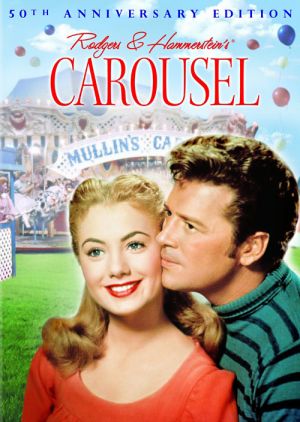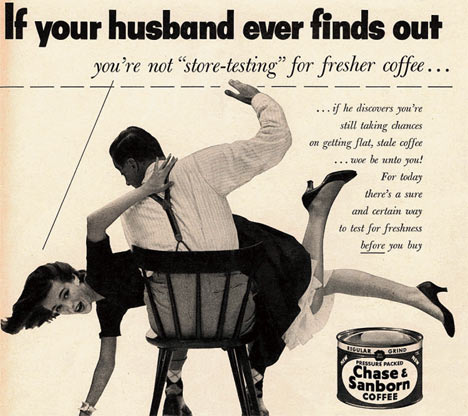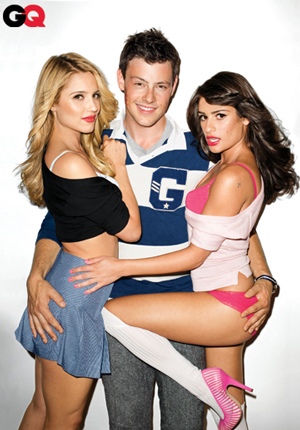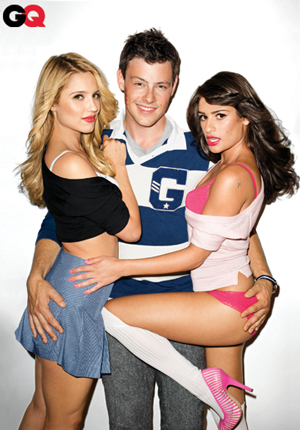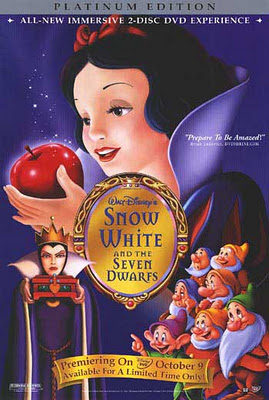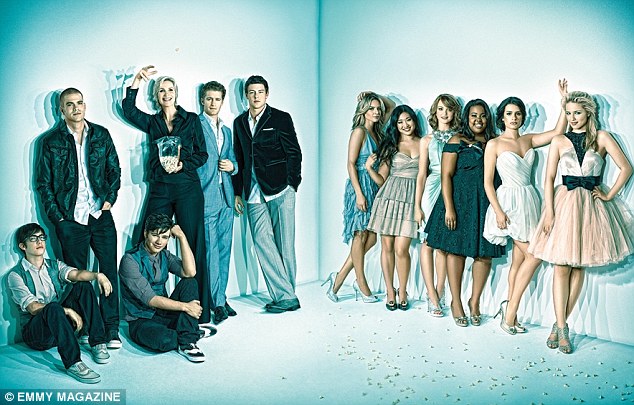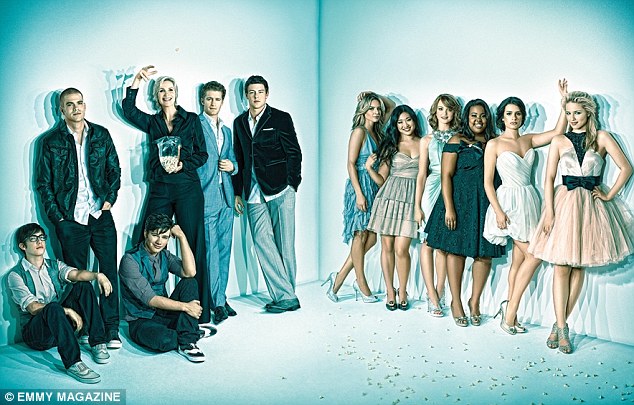Even though its finest moments all boil down to well-intentioned, high energy karaoke numbers, and its script (co-written by Justin Theroux) left more cheese in the recipe than what was called for, Rock of Ages is still great fun. Really, it’s like a longer, louder version of Glee or American Idol, but with actors who can’t sing rather than singers who can’t act. Plus, it rocks you like a hurricane.
The Funny Face Always Gets the Big Number: on Funny Girl by Jessica Freeman-Slade
I imagine that at least once a day somewhere in America, some little Jewish girl (or girls with big noses, close-set eyes, skinny legs, and less than model looks) has a benevolent mother, sister, or aunt who pops in a DVD and tells her to sit down. She squirms a bit, but her mom says “Just trust me.” And then up on the screen pops a wildly unself-conscious, funny, brazenly self-confident woman with a voice to stop traffic. Even though she’s seen Glee and watched Lea Michele emote her way through many of these songs, nothing compares to this other creature, the one and only Barbra Streisand, in her debut film, the incomparable Funny Girl.
Mulan: The Twinkie Defense by Karina Wilson
Mulan is peppered with crass jokes about Chinese food orders (because that’s what Americans can relate to about Chinese culture, right?), disrespectful references to ancestor worship, superficial homage to Buddhist practice and some kung-fu styling, of the Carradine kind. Given that Wu Xia is a rich, diverse, centuries old storytelling tradition, it also seems a shame that the writers didn’t draw more deeply on those perspectives. Instead, they send Mulan on a tired, Western Hero’s Journey, plugging her variables into the 12-step formula tried and tested by countless Hollywood protagonists.
The Lion King: Just Good, or Feminist Good? by FeministDisney
When it comes to Nala, her role has always frustrated me a lot. Ignoring that it might not work with the plot already in place, it was quite disappointing that Nala did not take over partially or fully in Simba’s absence. She is always shown, especially early on in the film, to be Simba’s equal, and she is perhaps even more intelligent, or at least a more naturally sound leader throughout the film, while Simba tends to be comparatively a bit more immature and in need of multiple characters propelling him into responsible/rightful action. This isn’t a critique of Simba’s likeability or abilities, but merely to say that in all aspects, Nala would have made at least a decent fill-in.
The Reception of Corpse Bride by Myrna Waldron
The film is fairly feminist for a horror-comedy, but it’s not perfect. There are at least two fat jokes in the story – a mean-spirited form of discrimination that needs to just end already. I was particularly annoyed that Mrs. Van Dort is portrayed as not being aware just how fat she is. Let’s set the record straight – if someone’s fat, they KNOW, thank you. There are also no people of colour in the cast at all. I suppose this is partly justified in that it takes place in Victorian Eastern Europe, and the aesthetic of the living village is severe whites, blacks, and greys, but there’s no reason there couldn’t have been minorities in the underworld village.
Bros Before Hoes, or How Kidnapping Makes for Great Dance Numbers: on Seven Brides for Seven Brothers by Jessica Freeman-Slade
The enlivening force of Seven Brides is male longing, and it makes for great theater. The Pontipee brothers have lived hard, but falling in love is what softens and civilizes them. But all that civilization is for nothing when Adam, modern man that he is, devises a brilliant scheme, pulled straight out of Millie’s copy of Plutarch’s Lives. Why not do like the Romans did with the Sabine women?
And then comes the merriest song about rape ever.
Not that female murders are anything new, but I enjoy that Chicago features nothing but. While we’re on the subject, there are exceedingly few main male characters in the film (one being Roxie’s dope of a husband and the other being a smarmy lawyer out for money), which is awesome and doesn’t happen all that often in movies dealing with murder. Let alone a musical movie dealing with murder. However, where I believe the film falls short is the fact that none of these characters has redeeming qualities.
Accidental Feminism in Mary Poppins by Megan Kearns
Interestingly, this bastion of film feminism occurred accidentally. Glynis Johns thought she was the one getting the role of Mary Poppins, not Julie Andrews. In order to assuage her potential furor over this fuck-up, Walt Disney told Johns that she had a phenomenal solo. To cover his ass, Disney called up songwriters Robert B. and Richard M. Sherman and said (while Johns was in earshot) that she couldn’t wait to hear the song. The Sherman Brothers quickly researched women’s movements in 1910 England, and wrote “Sister Suffragette” so Johns could hear the song after her lunch with Disney.
The Princess and the Frog by Janyce Denise Glasper
When compared to the other Disney princesses, Tiana’s story is a bunch of BS. She didn’t have an evil stepfamily, eat a poisoned apple, have graceful legs instead of fins, receive many hours of beauty rest, or become a madmen’s “love” slave.
Does that make her luckier? I think not.
None of those women would wish to be a frog with long, batty eyelashes.
Nope. Not one.
The Nightmare Before Christmas by Jessica Critcher
According to Wikipedia, the two witches aren’t given names in the film, only later in a video game. But even without the name part, they only talk to and about Jack. This sends the message to boys and girls alike that female characters do not have anything substantial to contribute to the dialogue or the plot of the film. Girls and women do not, apparently, have anything interesting or relevant to say to one another, and children internalize that very deeply. While this was probably unintentional, the effect is still the same.
The Little Mermaid by Ana Mardoll
I like The Little Mermaid. I like a lot of things that are problematic, and I don’t think there’s anything necessarily wrong with liking problematic things as long as a certain awareness is maintained that Problems Abound Therein. Art is complicated like that. But I like The Little Mermaid and I think it’s compatible with valuable feminist messages. Certainly, it was my first introduction into a feminist narrative and I have always considered the problematic romance storyline to be camouflage for the real story. But we’ll see whether or not you agree.
Singin’ In the Rain by Deirdre Crimmins
While the genre can whisk you away to foreign lands, and domestic bliss, it is also historically problematic when it comes it its representations of women, and gender in general. Though the men are singing and dancing, they are always men’s men, expressing their gender through ruggedness and emotional unavailability. The women are often window dressing, and pawns in the plot, rather than autonomous people who have actual emotions and ambitions. Singin’ In The Rain suffers from some of the same issues that many musicals have with their treatment of genders, but it does have a surprisingly progressive character as well.
The Rocky Horror Picture Show and the Pitchfork of Puritanism by Leigh Kolb
Of course, we aren’t supposed to walk away from a midnight showing of The Rocky Horror Picture Show feeling utterly meaningless. O’Brien himself self-identifies as transgender, and has been outspoken about how society should not “dictate” gender roles. He said in a recent interview, “If society allowed you to grow up feeling it was normal to be what you are, there wouldn’t be a problem. I don’t think the term ‘transvestite’ or ‘transsexual’ would exist: you’d just be another human being.”
Female Friendship, Madonna/Whore Stereotypes and Rape Culture in West Side Story by Megan Kearns
It’s interesting how other characters treat women in the film. In “America,” the Sharks sing about the xenophobia and racism they experience while the women sing about their aspirations and the promise of a better life in NYC. One of the Jets exasperatedly wonders why they’re fooling around with “dumb broads.” To which Graziella retorts, “Velma and I ain’t dumb.” Anybodys is the tomboy who desperately longs to be in the Jets. She hangs around the guys, spits on the ground and insults women, and sees the male gender as far more desirable. But rather than depicting gender variance or even a trans character, the Jets view Anybodys as a defective female. Some of the Jets taunt her that no one would want to sleep with her. Because apparently to them (and patriarchal society at large), a woman’s status resides only in her beauty, sexuality and desirability.
James and the Giant Peach by Libby White
The Aunts are horrific caretakers; starving, beating, and emotionally abusing James relentlessly. Mind you, this is a movie for children. And like in most children’s movies, the Aunts’ outward appearance reflects their inner evil. Both women are made to look terrifyingly cruel and yet simultaneously clown-like, dressed in orange-red wigs and slathered on make-up. During their first 20 minutes on screen, the two women participate in dozens of morally reprehensible practices, everything from shameless vanity to verbally attacking a woman and her children.
Watching Cinderella again for the first time since I was a child, it was amazing to me that time and again Disney portrays women as either bitches or victims. Ursula, Maleficent, Snow White’s Queen, the Queen of Hearts and of course Cinderella’s stepmother Lady Tremaine are all evil women, jealous of the beauty and innocence of their younger counterparts. One by one they seek to quell romance, passion, and everything else good from the lives of the eventual princesses by seeking power, wealth, and beauty of their own. Only a man can save these women from their pitiful disputes, damaging though they are. Perhaps the notion of a man wielding this type of power over a young, beautiful woman was a little too akin to rape for Disney’s taste. Either way, the Disney-fication of evil into an older, vindictive woman promotes an attitude that women are either a victim or seeking to be a victim; a mentality that when unleashed in the real world leads to horrific statements like, “She was asking for it.”
Phantom of the Opera: Great Music, Terrible Feminism by Myrna Waldron
Emmy Rossum’s Christine Daae is a lovely young woman with a pretty (if not exactly operatic) voice, and possibly the most spineless personality I’ve ever seen from a female protagonist. The love triangle between herself, the Phantom and Raoul is the central conflict of the story. Her preference for Raoul, her childhood sweetheart, is one of only two personal choices she makes throughout the entire story. Neither The Phantom nor Raoul ever seem to take Christine’s wants into account. I know I’m supposed to root for her to end up with at least one of the suitors, (the 26-year shipping wars notwithstanding) but honestly? Run away, Christine. RUN AWAY.
Jesus Christ Superstar: Feminism and Crosscasting by Barrett Vann
Though this is intended to examine the show through a feminist lens, intersectionality is key, and so mention must be given to race. Though the practise of colourblind casting has been open to some debate as to whether or not it’s actually a good thing (allowing, for instance, such un-self-aware gaffes as all-white productions of The Wiz with the argument that they’re being colourblind, they’re being progressive), in the 1973 film of JCS, it’s practised about as truly as I have ever seen. The ensemble of disciples is about as diverse racially as they are among gender lines, and of what one might term the ‘main’ cast, Judas and Simon Zealotes are played by black men, Mary Magdalene a woman of mixed Irish, Chinese, and Japanese descent, and the actor who plays Herod is Jewish. Somewhat ironically, come to that. Actors of colour are not relegated to unimportant side characters; they can be anyone.
The Surprising Feminism of Gentlemen Prefer Blondes by Myrna Waldron
Yes, the film is flawed, especially if taken at its apparently anti-feminist face value. But contextually, I feel that this film’s depiction of women is quite fair for its day. Yes, it would be nice if the girls weren’t stereotypes and Lorelei wasn’t a blatant golddigger, but then, where would the plot be? Not only are its stars, Marilyn Monroe and Jane Russell, important landmarks in feminist history, but their characters are too. Their friendship is absolutely ironclad – they put each other first, even though both are looking for love in different ways. Their confidence in their intelligence, lifestyle, and sexuality is incredibly liberated for what was supposedly a time of suffocatingly patriarchal morality.
“I Am Woman, Hear Me Roar … ish” by Lady T
Mostly, though, I’m curious about the reasons behind writing these “Hear Me Roar…ish” songs, especially the two numbers from the Rodgers & Hammerstein musicals. If the women are just going to end up with the men they’re declaring independence from, what’s the point of these songs at all? Did Rodgers and Hammerstein realize in both cases that they didn’t have a big musical number for all of the women in the show, and write these songs to give their female chorus members something to do? Did they decide that three solo songs and two duets for Mary Martin were not enough, and want to give her yet another number? (If that’s the case, I really can’t blame them for that, because Mary Martin is made of magic.)
Tangled by Whitney Mollenhauer
In the end, I think it makes a good case for women’s “proper place” NOT being just in the home, but out in the world/public sphere! I’m not sure how you could get any other moral out of it. Even in Mulan, after she saves China, she ends up returning home, and (we suspect) marrying the army captain guy, instead of taking a job with the emperor. In Tangled, the movie’s premise is centered around the idea that it’s wrong and horrible to expect a woman to spend her whole life at home.
Essentially, all of the women are defined by their attractiveness to men. “Ugly” women, then, are used as comic relief. In one of the first scenes, when a woman opens the door and says of Aladdin, “Still I think he’s rather tasty!”, everybody in the audience is supposed to laugh. Aladdin looks at the woman (who is quite large) and jumps in surprise and disgust. Oh, silly fat woman, you can’t have feelings because you’re ugly! We’re supposed to laugh at how ridiculous her thinking Aladdin is “tasty” is—because fat women and ugly women are not supposed to have sexual desires. Only when the sexy women do this is it okay—nobody is laughing at Jasmine’s proclamations of love for Aladdin, because it doesn’t seem ridiculous now. Aladdin is attractive, she is attractive, so they can be in love.
Glee! by Cali Loria
Having a character on TV who does not fit into the mold of being a perfect Westernized ideal of beauty would, in someone else’s hands, be refreshing. Glee, however, focuses on the extremes of women, enjoying the overt and campy hyperbolization of its characters which, in essence, detracts from actual storylines and only serves to render the women flat and one-dimensional: Jewish starlet, slut, dumb blonde, conniving cheerleader, sassy black woman, an Asian, and, now, a full-fleshed female. Glee has a recipe with every ingredient, but stirred together it’s one big lump of heterogeneous stereotypes.
Snow White and the Seven Dwarfs by Rebecca Cohen
At every turn, Snow White embodies old-fashioned, small town American ideals. She helps a baby bird not just back to its nest, but back to its “momma and poppa” (because every creature should properly be part of a traditional nuclear family, of course). When she arrives at the dwarfs’ cottage in the woods, her first instinct is to clean up. She assumes, in keeping with traditional gender roles, that the children who live there must not have a mother. That’s the only possible way to explain how their house could be so dirty. Not only does she clean up the place, she enlists the help of the woodland fauna. Indeed, Snow White domesticates everyone and everything around her, spreading the conservative ideals of cleanliness, hard work, and unquestioning acceptance of the status quo even to the animals. She civilizes the dwarfs as well, refusing to feed them until they’ve washed up.
Despite an Intelligent Heroine, Beauty Obsession, Sexism & Stockholm Syndrome Taint Disney’s Beauty and the Beast by Megan Kearns
The only other female characters in the movie are Mrs. Potts (I heart Angela Lansbury!), the wardrobe (who has no personality) and the French maid feather duster. A grandmotherly type and a sexpot. Of course Disney does their notorious matricide in the form of the protagonist’s mother either dead or non-existent. They demonize stepmothers and solely focus on both daughters’ and sons’ relationships with their fathers. Seriously, Disney, what the hell have you got against mothers?? And yep, I’m aware Mrs. Potts is Chips’s mother. Doesn’t count. Not only is she not Belle’s mother, she’s a fucking teapot for most of the film. Belle has no female friends, no mother, no sister, no female role model. The importance of female camaraderie and sisterly bonding remain absent from the film.
My Top 6 Favorite Female Empowerment Songs in Musicals by Megan Kearns
As much as I adore musicals, most songs are about men, either men singing them or women singing about men — men they desire or men who have done them wrong. Where are the songs belted out by the ladies for the ladies?? After perusing my DVD collection, Broadway ticket stubs and good ole’ google, I’ve compiled a list. In no particular order, here are my favorite powerful women anthems in musical film.
That Glee Photo Shoot by Fannie
I could also talk about how annoyingly predictable it is that, of all of Glee’s diverse cast members, it is the two women who most conform to conventional Hollywood beauty standards who have been granted the empowerful privilege of being sexified for a men’s mag. For, despite Glee’s idealistic and uplifting message that It’s What’s On the Inside That Counts, the show’s resident Fat Black Girl With A Soulful Voice is noticeably absent from the shoot.
Carousel: A Fairytale Screen Adaptation of the 2012 Republican Anti-Woman Agenda by Stephanie Rogers
Re-watching it this week—for the purpose of writing about how much I admired the way it handled domestic violence issues (in 1956, no less)—I realized my 13-year-old self understood jack shit about misogyny in film, and she certainly didn’t understand what constitutes successfully raising awareness about violence against women.
The only thing I can think to say about Carousel now, as a 34-year-old woman who’s been both a witness to and a victim of physical abuse at the hands of men, isn’t just that I’m appalled by its sexism or the blasé nature in which it deals with physical abuse (I am), but that I’m seriously freaked out by how a movie musical from sixty years ago manages to feel like a fairytale screen adaptation of the 2012 Republican anti-woman agenda.
